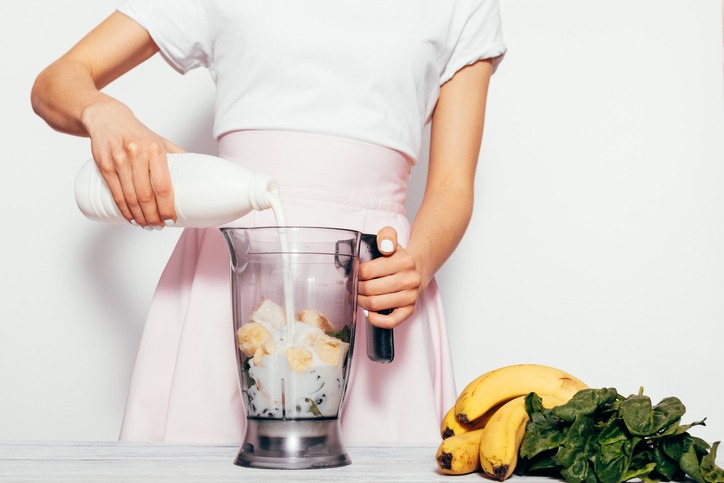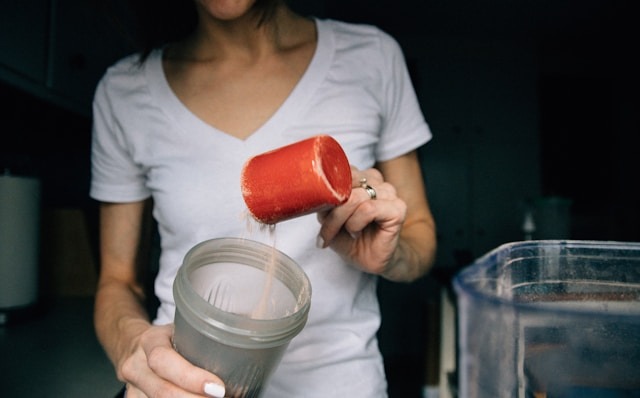To achieve the best results when making a smoothie, the sequence in which you add ingredients to your blender is crucial. A layered approach not only enhances the texture and consistency of your smoothie but also maximizes the flavor and preserves the nutrients. Remember, a well-loaded blender means fewer stops to stir or tamp down ingredients, making your blending process both smoother and faster.
Key Takeaways
- Begin by pouring liquids such as water or milk into the blender. This forms a fluid base that facilitates smoother blending of other ingredients.
- Next, add any powders, like protein or cocoa. This step prevents the powders from sticking at the bottom and ensures they mix well.
- Follow with fresh fruits and vegetables. Placing them after the powders promotes better mixing and an even distribution throughout the blend.
- Add creamy ingredients like yogurt or avocado next. These elements enhance the texture of your blend, making it richer.
- Finally, top the mixture with frozen items or ice. This not only cools the blend but also helps maintain a thick, consistent texture.
Begin With Liquids
Begin by adding liquids such as water, milk, or juice to the bottom of your blender. This step is crucial as it ensures that the blender blades can move freely, preventing any clumping of ingredients. Starting with liquids helps create a vortex that ensures all ingredients blend evenly, resulting in a smoother smoothie.
When you introduce these liquids, you do more than just avoid mechanical issues; you ensure that the blending process combines all components effectively, avoiding any sticking to the sides or creating lumpy textures. Whether you choose water, coconut water, or any fruit juice, starting with a liquid base promotes a uniform texture throughout your smoothie, enhancing your drinking experience from start to finish.
Add Powders Next
After adding your liquid base, immediately follow with powders such as protein or cocoa. This approach helps prevent clumping and ensures a smooth texture. Adding powders directly over the liquid helps them blend evenly and stops them from sticking to the sides of the blender jar.
Layering powders right after liquids allows the liquid to fully incorporate the powders, preventing dry spots and achieving uniform distribution in your blend. This technique ensures every sip is consistently good.
Additionally, this method improves the efficiency of your blending process. Placing powders between the liquid and any solid ingredients allows the blender blades to mix the ingredients more effectively. This not only ensures a better blend but also reduces wear on your blender, extending its lifespan.
Follow these steps to enhance your blending technique and achieve optimal results.
Insert Fresh Produce
After incorporating powders, add freshly cut fruits and vegetables to your smoothie for essential nutrients and natural sweetness. Proper layering of ingredients ensures a smooth blend.
Follow these tips when adding fresh produce:
- Size Matters: Chop larger fruits and vegetables into smaller pieces to ensure even blending and to avoid overworking your blender.
- Variety is Key: Combine various colors and types of fruits and vegetables. This not only enhances the visual appeal but also maximizes nutrient intake.
- Layer Wisely: Start with soft, high-moisture items like tomatoes or oranges near the blades. Add harder items such as apples or carrots on top. This method promotes efficient blending.
- Balance Flavors: Aim for a mix of sweet and tart fruits along with neutral vegetables to improve flavor without additional sugars.
Include Creamy Elements
To improve the texture and taste of your smoothie, consider adding creamy elements such as yogurt, nut butter, or avocado. These ingredients not only make your smoothie thicker and more satisfying but also enhance its nutritional value. When assembling your smoothie, add creamy components right after fresh produce and before any frozen items or nuts and seeds to ensure they blend evenly and don’t stick to the bottom.
Here is a guide on how to incorporate various creamy elements for a better smoothie:
| Creamy Element | Benefits | Best Paired With |
|---|---|---|
| Yogurt | Increases protein and adds probiotics | Berries, bananas |
| Nut butter | Supplies healthy fats and protein | Apples, frozen fruits |
| Avocado | Provides heart-healthy fats | Spinach, kale |
| Coconut cream | Adds a tropical flavor and creaminess | Pineapple, mango |
| Silken tofu | Enhances protein content without altering flavor | Peach, cherry |
Top With Frozen Items
After incorporating creamy ingredients, top them with frozen fruits, ice, and nuts. This layering is crucial not only for maintaining a cold blend but also for ensuring an effective blending process. Here’s why it’s essential to place these frozen items last:
- Press Down Soft Ingredients: Frozen fruits and ice serve to press down lighter layers, pushing them closer to the blender blades. This results in a finer and smoother blend.
- Avoid Blade Jamming: Placing frozen items on top prevents them from sticking to the blades initially, which can lead to blockages and uneven blending.
- Improve Mixing: The added weight of frozen elements aids in better mixing and emulsification, enhancing the creamy texture of your blend.
- Generate a Blending Vortex: Frozen items at the top contribute to creating a strong vortex as the blender operates, pulling all ingredients downwards. This action ensures thorough mixing without needing to stir manually.




